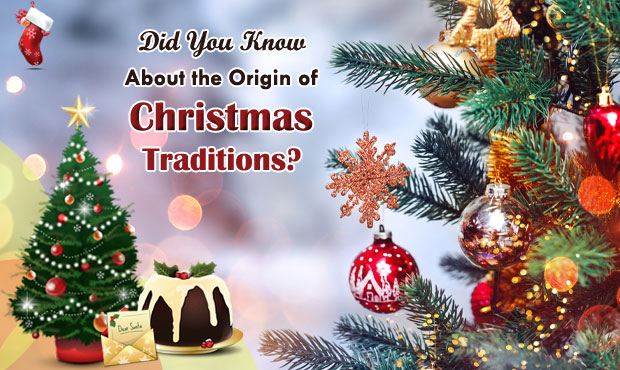It is that joyful time of the year when we can say that Christmas is around the corner! As all of us get busy making preparations for celebrations, including adorning our houses with traditional Christmas decor, it makes sense to revisit some of the top Christmas traditions and the story behind their origin:

Christmas Cards
The origin of Christmas Cards owes itself to Sir Henry Cole and artist John Horsley marketing initiative to promote the Public Records Office that they helped to start. At the Christmas of 1843, the first Christmas cards were sent to people to motivate them to use the services of the PRO. The idea picked up and subsequently gained momentum by 1860s. In the next four decades, the entire Europe was sending and receiving thoughtful Christmas cards at the festival.
The Christmas Tree
The tradition of putting up a Christmas tree was popularised in the UK by Prince Albert, the consort of Queen Victoria, when he put up a Christmas tree at the Windsor Castle in 1841. Though, the trend had existed in other parts of the Europe for years, it was only after the Windsor Castle embraced the Christmas Tree that it became an essential part of Christmas celebration in the UK.
Mince Pies
Mince Pies are of Middle Eastern origin and were brought to the UK by the Crusaders. Originally constituted by meat, fruits and spices; the pies were made in the oval shape to represent the manger of the Christ. During the Georgian times, mince pies were cooked largely by rich and affluent British people and served at lavish Christmas parties with the belief that if you eat a mince pie on every day from Christmas to Twelfth Night, you will have happiness for the next 12 months.
Stockings
The tradition of hanging empty stockings at Christmas so that the Santa could fill them with gifts and treats originated courtesy St Nicholas, popular as the Santa Claus, and known for his charitable deeds. The legend has it that on one occasion St Nicholas threw a bag full of gold coins down the chimney of a the home of a poor man who needed the money to marry his daughters. To start an integral Christmas tradition, the gold fell into the stockings that were left to dry.
Christmas Carols
During the pagan times, carols were sung to praise the lord and to express joy as people danced around stone circles, especially around the Winter Solstice. The Early Christians borrowed the tradition of singing the carols to mark Christmas and came out with their own versions of the carols. Around the Victorian Era, the tradition of singing carols for Christmas spread throughout the UK.